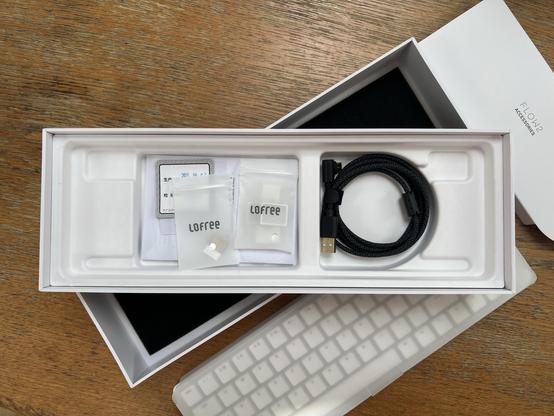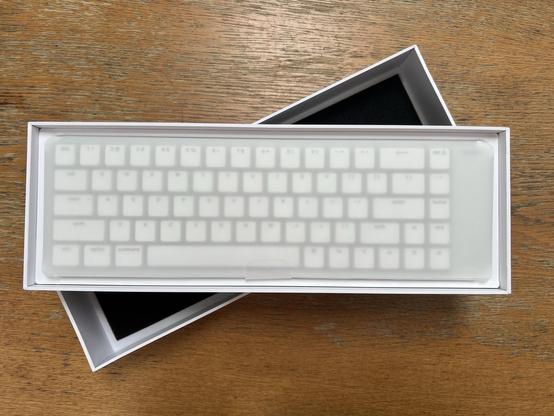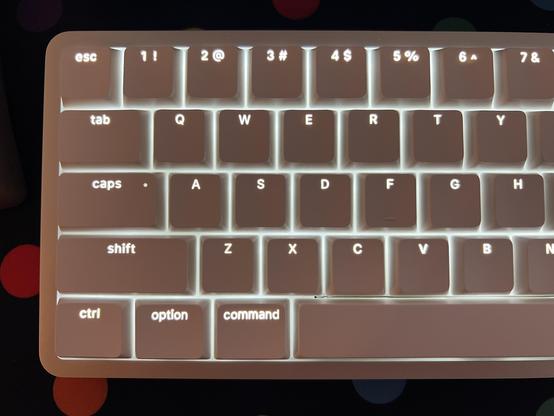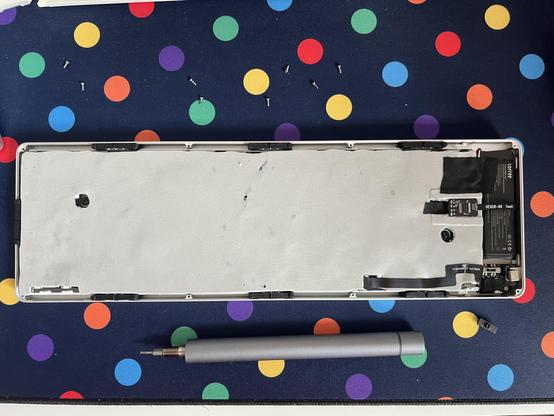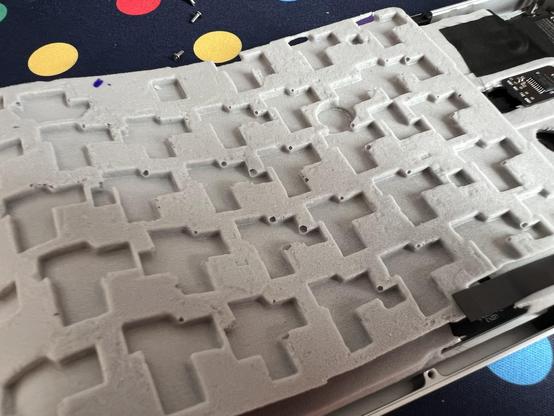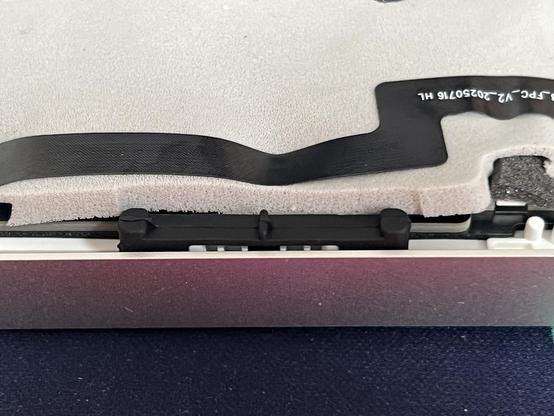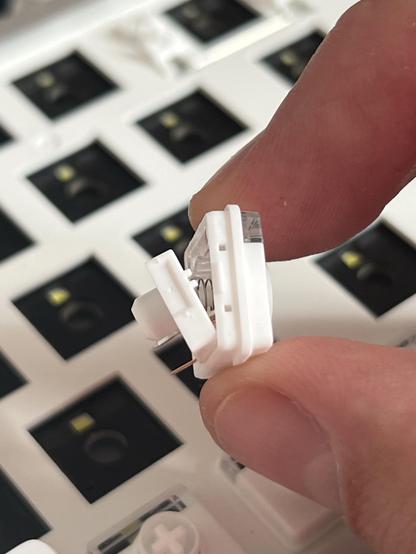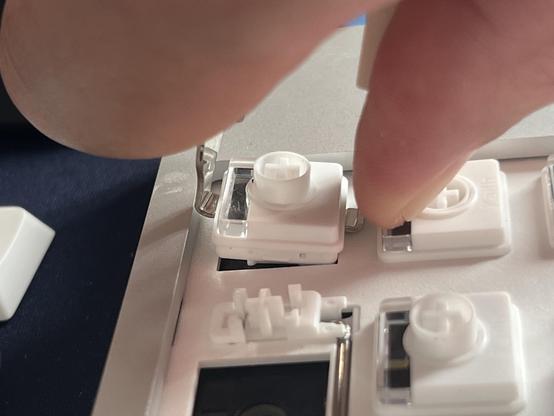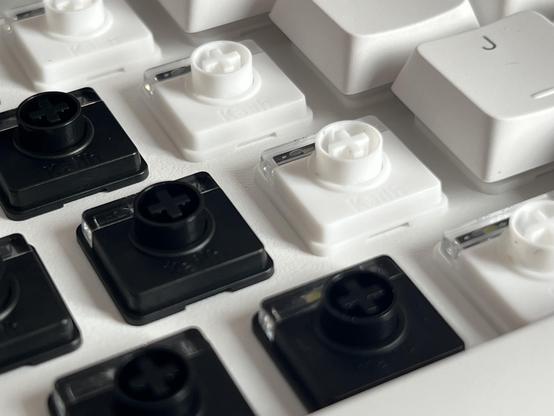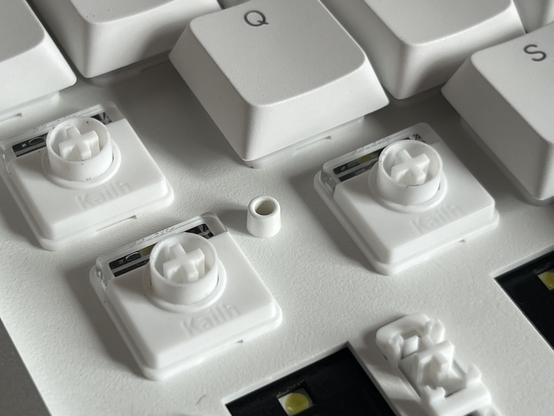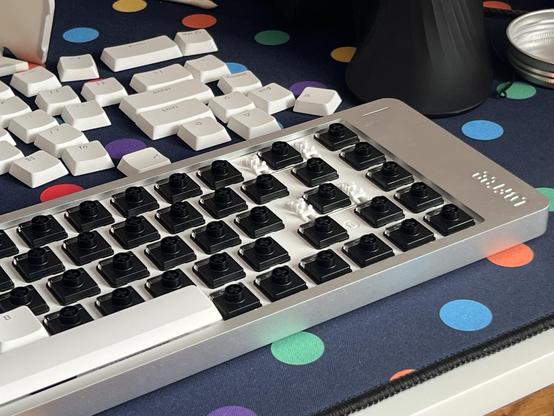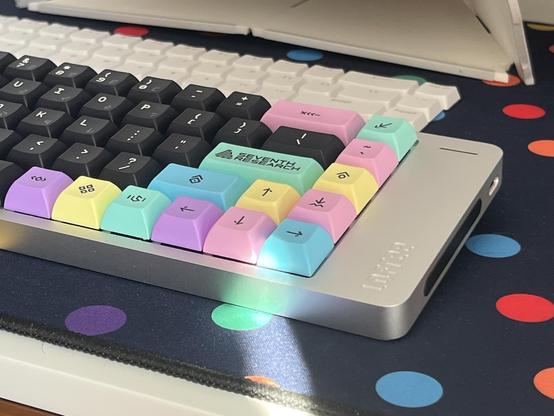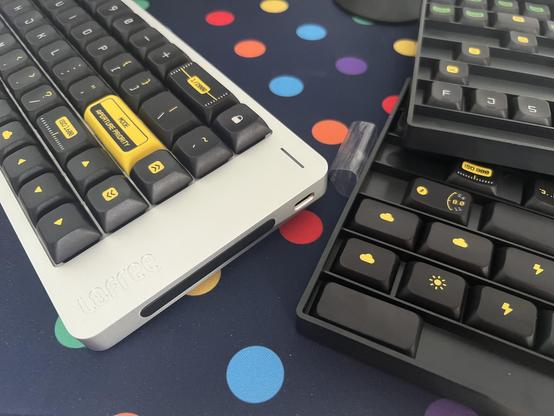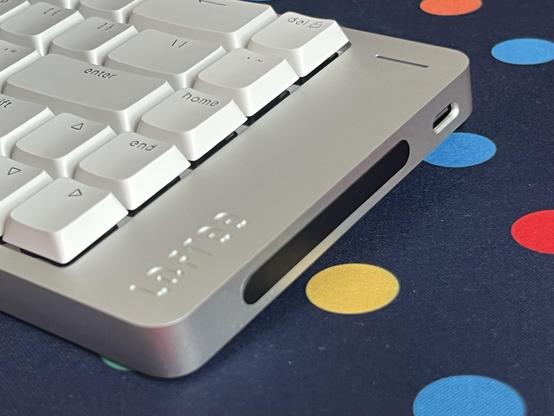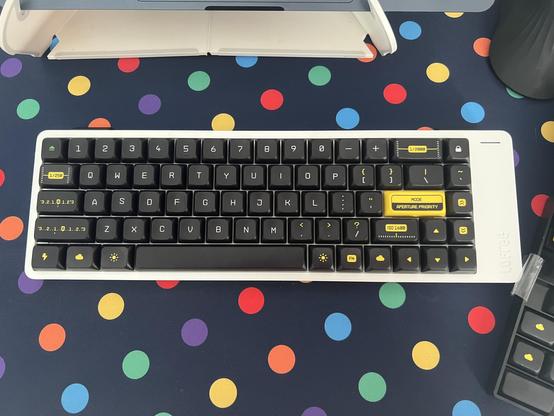Lofree Flow 2 68 – 65%, low profile mechanical keyboard – reviewed
Lofree’s Flow 2 is the sort of keyboard I would have loved before I fell deep, deep into the rabbit hole of mechanical boards and developed a particular set of preferences. It’s a board that’s still worthy of love, though. From its meticulously crafted packaging – offering nearly Apple levels of presentation – to its crisp, clean good looks and uncompromising sharp edges… it’s an experience.
I’ve wanted to get my hands on something, anything from Lofree ever since I first came across them. They have a keen sense of style, and a focus on evolving a core range of compact, sleek boards while also dabbling in more adventurous designs.
I was lucky enough, at last, to poke them right as the Flow 2 was launching and they supplied me with a silver/white, 68 model upon which I am now writing this review.
This board seems to capture that elusive middle ground between bulky, opinionated mechanical keyboard and practical companion for your MacBook Pro. The top shell is machined aluminium with a crisp, seamless, sharp edge that complements that of a MacBook (or perhaps other, modern metal-body laptops). The 68 key version – as tested – is the same width as my MacBook, which I feel can’t be accidental- the right-hand edge of the board is a generous logo area, and also where the USB port, charge indicator (battery) and touch strip (we’ll get to that, don’t worry) live.
It’s clear from the initial box opening that Lofree wants to capture that Apple feel. And, let’s be honest, it works 🤣
The supplied USB cable is a nice, braided, USB-C to USB Type-C setup, with a right-angled connector on the USB Type-C end. It’s an odd choice for the port to be in the right-hand side of the keyboard (you know, where most of us – even ostensible lefty me – use our mice) but the right angle sweeps it out of the way so that it’s not a problem. It does mean that if you’re using wired, or charging often you’ll want to find a similar replacement cable.
It’s shipped with a mac-first configuration- that’s Ctrl, Option and Command keys in lieu of Ctrl, Windows and Alt ( though the latter are supplied in the box should you wish to swap them out ) – which complements its very Apple fit and finish. (Fn + N switches into Windows/Android mode, and Fn + M back to macOS/iOS)
The keycaps are low profile, with a very flat top close in size and shape to those on a MacBook. They have quite sharp edges and a basic cylindrical scoop, so they’re not as forgiving as my current favourite profile (called Penguin Belly Slide, I kid you not) but are very tonally consistent with the uncomplicated, angular design of the board itself.
Crisp, uniform backlighting, albeit with quite a lot of spill around the keys. Nonetheless, this is what I like to see!
They are backlit with north-facing LEDs (that’s LEDs above the switch, rather than below, since legends normally appear toward the top of a keycap) and – even in this early afternoon cloudy daylight – are crisp and clear. Backlighting is extremely uniform, with even the larger legends lit up almost in their entirety (though the edges of “command” are pushing it a little), and there’s a subtle, but inoffensive underglow. There’s a little illumination hot-spot around the legends, noticeable on number keys in low light and full backlight brightness, but nothing so severe that it marrs what might be some of the best illuminated legends I’ve seen outside of my MacBook itself. I have no doubt that Lofree’s consistency – revising the same concept to hone in on a top quality board, rather than try new things – has a lot to do with this, and I appreciate that.
The key legends themselves are clear and consistent, albeit there’s a slightly opinionated choice of font with a peculiar un-closed lowercase e. Legend sizes are consistent, though the “command” key does look like they’ve reduced the tracking (gap between the letters) to squeeze it onto the 1.25u cap.
Perhaps one of the best features, on the topic of keycaps I suppose, is that there’s a tilde/backtick key on the right-hand side of the keyboard below del. Normally this would appear to the left of the number row, but since this is a 65% (68-key) board, it lacks a function row and tucks “esc” down into that spot. Typically I would use Fn + Esc for tilde, but having a visible, dedicated key is much, much more useful for folks who might use it (programmers, mostly, I think?) and not want it hidden away somewhere they need to learn.
This also means Home and End double as Page Up and Page Down, which is extremely intuitive. Oh and Fn + Del (the key also has a padlock) very predictably locks my MacBook, preventing me from trying to press Windows + L. Old habits die hard.
Since Fn + a number key triggers the corresponding F key function (brightness, spotlight, music transport, etc) there’s an Fn + Tab combo to switch the number row to regular function keys. This might be confusing for the sort of folks who don’t read manuals and wonder why their numbers aren’t working, but it’s very much the sort of touch I appreciate. Some visual indication of this would really make things great, but there is the 84-key variant for those who really aren’t comfortable with a condensed 68 key layout.
That said, if you don’t need the numpad from the 100 key version and you aren’t glued to your F keys, then I would recommend the 68 in particular. The 84 key version just looks a bit busy.
My biggest complaint about this board would be the feet- while they are metal and have a very satisfying flip-out mechanism (and the power switch is hidden beneath one, clever!) they only offer one tilt angle. When laid flat the board feels odd, as if it’s angled backwards. While I find it perfectly fine with the feet deployed, that may not be true of everyone. This odd backwards tilt sensation may be because the Flow 2 has a uniform height front to back. This is notably different from – for example – the Keychron K3 which has a pronounced forward tilt even before folding out one of its two feet options.
To Lofree’s credit, the Flow 2’s feet are quite large, offering a tilt angle that matches that of my larger, regular keyboards (which have no adjustment whatsoever). I think it should be assumed that feet-deployed is the correct way to go on a desk, and that they can be folded away for lap use with a tablet or otherwise.
My other complaint would be the serial number sticker, it’s glaring at me from under the spacebar, ruining an otherwise beautifully pristine plate.
As for sound – that’s the sound of your typing – the Flow 2 delves quite far into “thock” territory for something so compact. That’s to say that it sounds deep and defined rather than sharp and rattly.
Teardown
I suppose I am obligated to take this beautiful board apart. Thankfully there’s no need to use pry tools this time, since it’s secured by eight small torx screws around the perimeter of the bottom case.
This is a weird board inside. It’s densely packed with an almost laptop like layout, battery and flat flex cables for the board and touch sensor off to one side. Everything else covered by thick grey foam.
Despite the easily accessible screws, prying the keyboard apart is particularly difficult since the foam underneath the PCB does not want to let go of the aluminium bottom. A careful effort to pry them apart was successful, but the board – with its carefully routed, laptop-like flat flex cables from the USB port and touch sensor – quickly put a stop to any further disassembly.
The foam is bizarre, unlike anything I’ve seen yet- somehow moulded into a 3D shape that encompasses the horse sockets, but very roughly formed. Good enough, I suppose.
I did manage to get a peek under the foam, revealing a straight forward black PCB, and the bizarre, 3D moulding of the foam itself.
Sure enough there are also gaskets keeping the PCB mechanically isolated from the outer shell. Though, with everything packed in this tight, who knows if they accomplish much.
A cantilever style gasket mount in a board this thin is quite a wild concept, but it does have an impact.
While we’re poking about inside, switches sort of count. The Flow 2 uses Kailh low profile switches which are not pin compatible with MX low profile switches. Lofree offer some alternate options and supplied both Void and Pulse from their “Cloud Series” to swap into this keyboard. Unfortunately removing the Kailh low profile switches is difficult, since they’re gripped at the top and bottom but the clips are on the left and right with nothing pushing them in to release them.
Removing switches is a little tricky, they’re hard to grip and prone to coming apart. Definitely not a board I’d recommend a beginner tackle switch swaps on!
I absent mindedly grabbed my regular switch puller and broke more than a couple – since the top edge around the lens is quite fragile – trying to pry them out. Don’t lose the puller that comes with the replacement switches! It has wider tips for a better grip across the switch. Eventually I found that holding the switch puller right near the end and employing a good up/down wiggle or levering against my thumb would release a switch without too much trouble. If you’ve never swapped out switches before- this is definitely not the board to start with.
A switch swap in progress. Changing out the stock white “Surfer” switches for black tactile “Pulse” switches.
Nonetheless swapping out from the white stock linear “Surfer” switches to the black tactile “Pulse” resulted in a little less spill of the backlighting, and a rather nicer typing experience. It’s a bit of a shame the bottoms of the switches peek out between keycaps, though, since the stock white switches blend so very, very well in with the white plastic plate.
The plate is a forked plastic, maybe polycarbonate? It even has a light guide - in the form of a small conical tunnel - to illuminate a little indicator LED at the corner of the cap lock key.
I did also find that the LED for illuminating the corner of the caps lock key has a little guide or shroud to prevent it from bleeding over into the legend. This means, I guess, that the plate is an injection moulded, 3D part (the debossed Lofree and Maker 2m squared logos also suggest this) which is pretty wild. Whatever it is, it’s pretty robust and doesn’t like letting go of those switches ha!
A full switch swap takes some effort, but it’s doable. These are the Lofree “Pulse” tactile Kailh switches, installed into a Flow 2 68.
Software
Flow 2 is VIA compatible, meaning you can – yeah, as usual – use the VIA web software via a side-loaded JSON file to completely customise the key bindings to suit your own nefarious ends.
It’s a six layer board, with three layers for macOS and three for Windows. In practice only two each of these have any functions, with the third layer reserved for accessing “Clear EEPROM” (a full board factory reset). The hotkeys to switch between macOS and Windows just change the default layer from 0 (with Fn stuff on 1) to 2 (with Fn stuff on 3).
If you change these hotkeys you can easily set up a four or even six layer labyrinth of key bindings and macros that uses all of the layers for your OS of choice. With tilde configured out of the box, though, there’s precious little I’m inclined to change. That said, if I could find somewhere to add Esc + B and Esc + F macros for command-line wrangling…
VIA works both on 2.4GHz via the USB dongle, and in wired mode but not via Bluetooth. It’s a shame, since you get three Bluetooth profiles for devices and it’s probably the way most people will use this board- but entirely common with VIA support. The battery is only 2000mAh, so you might be plugging in that USB cable regularly anyway.
Dressing it up
If you’re angling for some nicer keycaps to personalise your Flow 2, your options are limited mostly to low profile, “chiclet” style caps. Lofree have some okay options, but they aren’t the most compelling.
No board review would be complete without a keycap swap. Predictably KAM caps almost work, but tend to snag on the tops of the switches. Solvable with some hackery, but… I have PBS caps!
As with most low profile setups, even though these Kailh switches look a little wider and flatter than the low profile MX, full-height keycaps in profiles such as Cherry or SA will most likely stick over the switch when pressed down. The same can be said for KAM, which is a very mixed bag with low profile switches. In the past I have resorted to carefully cutting the plastic of a switch to stop the keycaps binding. Indeed while Flow 2 looks ace with KAM Astha caps, a couple are prone to sticking.
I figured these PBS Aperture Priority keycaps would work well with Flow 2. They’re just the right amount of low profile not to snag on the switches, and feel so much better than the stock caps. Backlight even punches through them a little.
Fortunately we have my new favourite profile- PBS (Penguin Belly Slide)- to lean on. It’s much lower, softer and far more forgiving with low profile switches though there aren’t many choices yet. PBS blanks are an obvious choice, since they’re affordable and delectably minimalist. I have Aperture Priority unmounted, so let’s try that:
Overall
Lofree’s 68-key Flow 2 has joined the parade of low-profile keyboards that make typing on my MacBook feel terrible by comparison. Having just a little angle, and the extra travel makes all the difference. Since I’m a Mac user, I couldn’t be happier that it comes preconfigured for macOS; finding out how to swap the Windows and Alt keys is the first thing I do with every new board. That it’s (presumably intentionally) the general style and width of my laptop is also pleasing, even if it isn’t the same midnight blue.
The general design, build, fit, finish, beautiful out of the box presentation and very good key legend backlighting make this one of – if not the – best low profile keyboards I’ve tested.
The Touch Bar is a little bit marmite. It’s cool that it works better than many boards implement their rotary encoders… less so that it’s so easy to trigger accidentally. It can, thankfully, be turned off.
If I could make just a few changes then the first would be ISO layout, then slightly rounder keycaps with a spherical top, and finally maybe just drop the touch bar- I think I trigger it more accidentally than intentionally (it’s basically impossible to move or pick up the keyboard without doing so) and I don’t adjust volume and brightness so often that they need a dedicated input. It’s thankfully possible to disable the touch bar with Fn + Space for 3 seconds (a fact tucked away from the rest of the hotkeys in the manual).
As much as I’m tempted to suggest the feet also change… well, they work fine for me! The angle matching my larger boards makes swapping out that little bit easier.
Perfection.
This is, for the most part, a thoroughly excellent compact keyboard and I’m happy that I kept chasing Lofree until they relented. Don’t plan on doing a full switch swap unless you like tiny plastic projectiles flying everywhere, though! For me, this will be my iPhone daily driver- helping me crank out the descriptions and alt text for my embedded photos.
You can still “late pledge” for Flow 2 on Kickstarter for $119usd.
